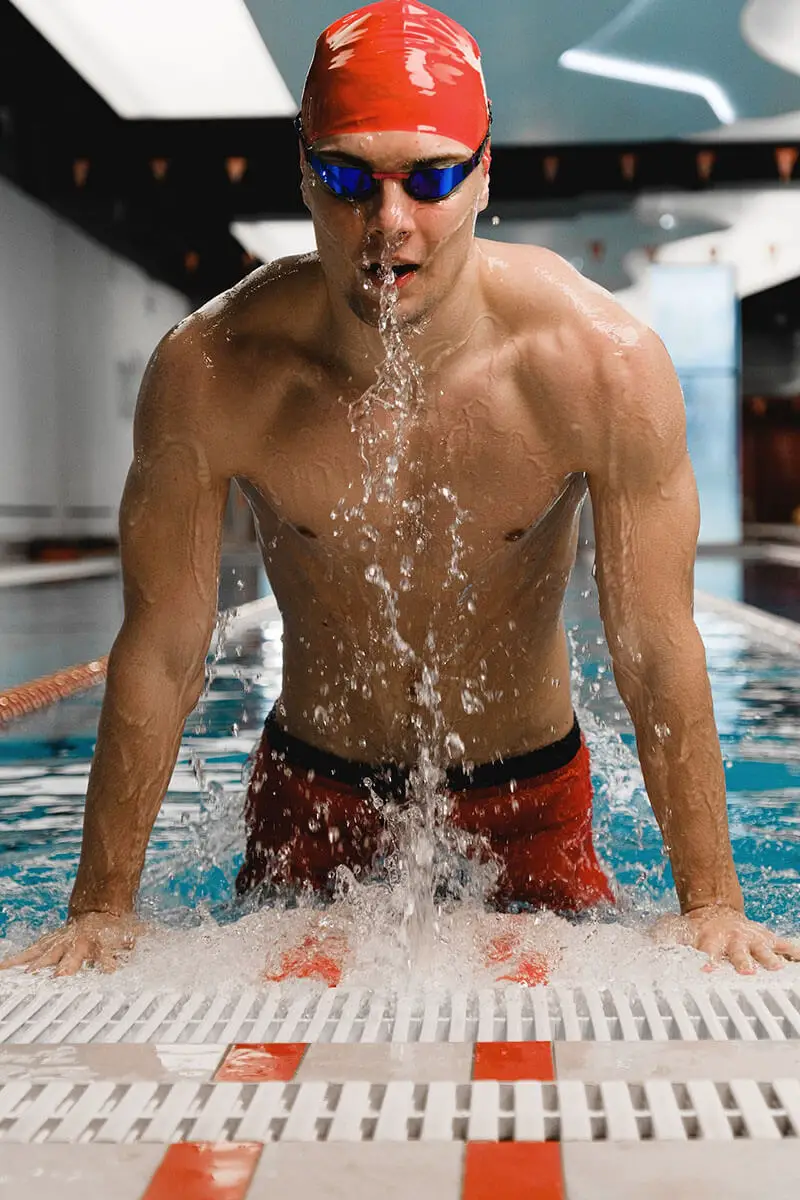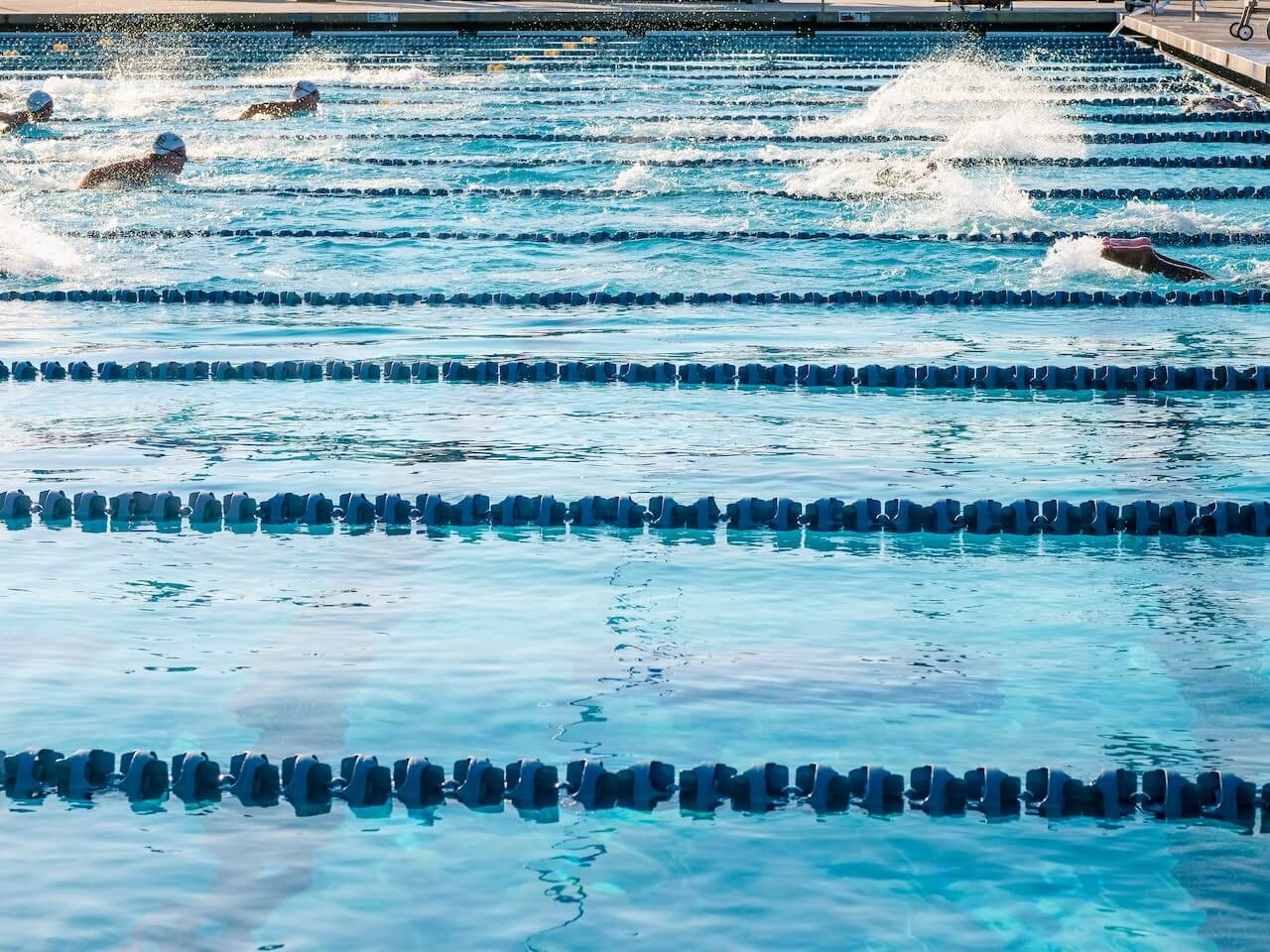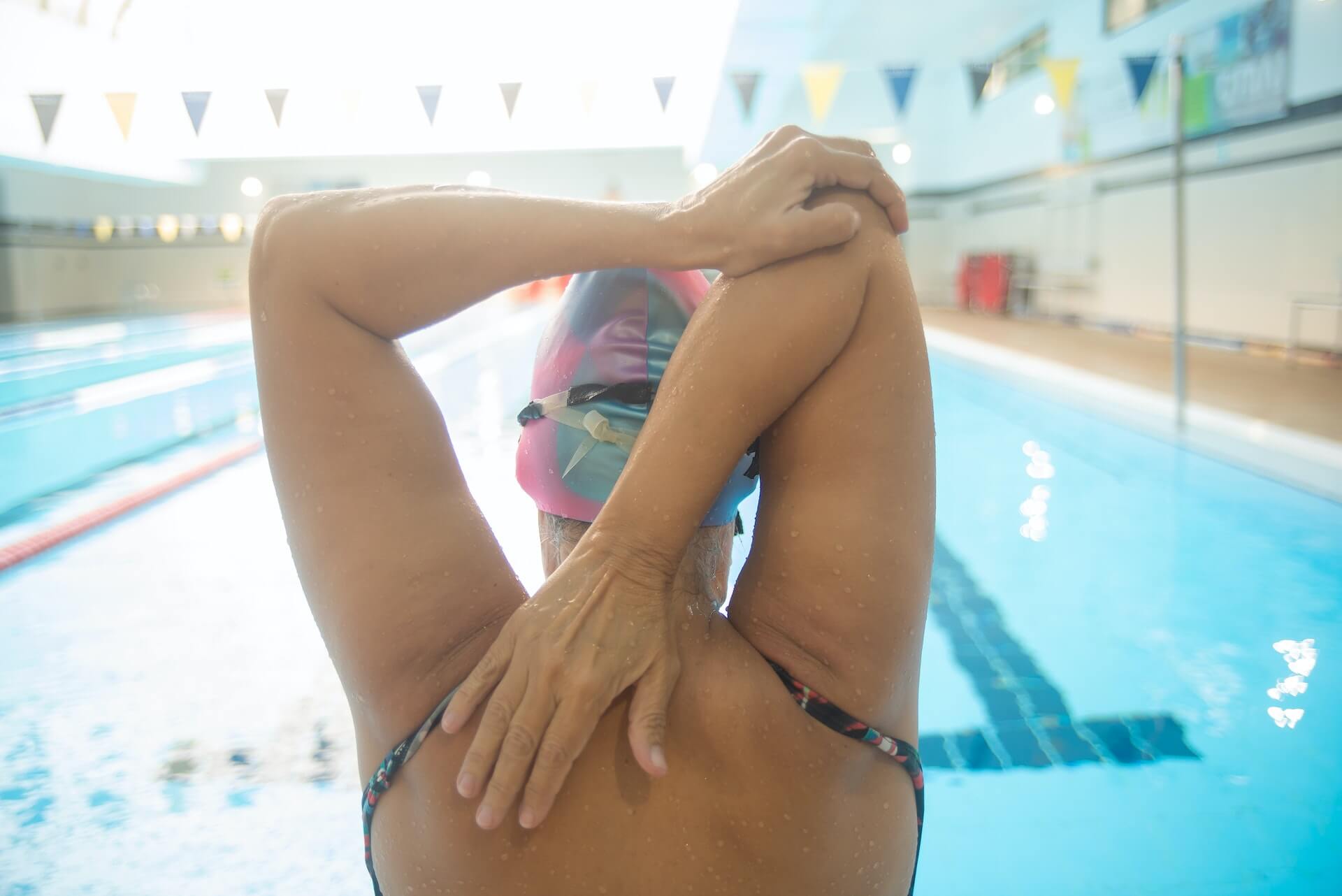Choosing the right exercise for your fitness journey can be a challenging decision. Two popular workouts that often come up for consideration are swimming and jumping rope. Each of these activities offers unique benefits and challenges, helping you achieve your fitness goals in different ways.

Swimming is a low-impact, full-body exercise that allows you to work your muscles while reducing stress on your joints. It’s an excellent option if you’re looking for a workout that is easy on your body and can be practiced by people of all ages and fitness levels.
Jumping rope is a simple yet effective cardiovascular workout that targets a range of muscles in your arms, legs, and hips. With minimal equipment required, it provides an accessible and affordable option to improve your fitness and coordination.
In the following sections, we will compare these two exercises more in-depth, helping you determine which one is better suited to achieve your weight loss or health goals.
Understanding Swimming and Jump Rope

When deciding what’s the best workout for your fitness routine, you may find yourself debating between swimming and other exercises such as jump rope. Both activities offer unique benefits to help you stay in shape and improve your overall well-being. In this section, we’ll provide a general overview of each exercise, starting with swimming.
Swimming is a full-body workout that engages your arms, legs, and core muscles. As a low-impact activity, it puts minimal stress on your joints, making it a great option for people of all ages and fitness levels. Swimming can improve your cardiovascular endurance, as well as help to build strength and flexibility.
One major advantage of swimming is its ability to condition your lungs, providing an overall boost to your respiratory system. However, it’s worth noting that pool membership and ownership can be more expensive than owning a jump rope, so accessibility may be a consideration for some people.
On the other hand, jump rope exercises also offer a comprehensive workout that is great for cardiovascular endurance and engaging more muscles than swimming. Jumping rope can also help you burn more calories per minute and it doesn’t require any expensive gym membership or equipment. All you need is a jump rope, and you’re good to go.
Muscle Groups Targeted

When deciding between swimming and jump rope, it’s essential to consider which muscle groups each exercise targets. Let’s dive into the muscles worked by each activity to help you understand their differences.
Swimming is a full-body workout that engages almost all of your muscles. While you’re in the water, your upper body gets an intense workout, as your shoulders, biceps, and triceps propel you forward. Your chest and back muscles also engage to keep your body stable, while your abs and lower back provide core strength to maintain proper body alignment.
In terms of your lower body, swimming works your glutes, hamstrings, quads, and hip muscles. Different swimming strokes target slightly different muscle groups, but the overall benefits to your lower body are similar. So, while swimming, you can expect to strengthen and tone your entire body.
On the other hand, jumping rope is predominantly a lower-body exercise. As you jump, your calves, quads, and hamstrings propel your body upwards, while your glutes and hip muscles control and stabilize your landing. Though jumping rope focuses on lower body muscles, this exercise doesn’t leave your upper body entirely out of the equation.
Your shoulders, arms, and forearms work together to turn the rope, which also puts your abs and core muscles to work as they stabilize your body throughout the exercise. However, jumping rope does not engage the muscles in both your upper body and lower body as extensively as swimming
Intensity and Pace

When comparing swimming and jump rope exercises, it’s important to consider the intensity and pace of each activity. Intensity refers to how hard you’re working during the exercise, while pace is the rate at which you perform the movements. Both factors can affect the overall effectiveness of your workout.
Swimming can be adapted to various intensity levels. You can choose from a range of strokes, like freestyle, breaststroke, butterfly, and backstroke, each requiring different muscle engagements and energy demands. To increase the intensity of your swimming workout, you can try sprint swimming, incorporating resistance tools, or swimming in intervals.
To adjust the intensity of a jump rope workout, you can vary the speed at which you jump, perform different jump techniques, or try adding a weighted rope. The intensity of a jump rope session can be easily measured by monitoring your heart rate, which should fall within your target heart rate zone for vigorous exercise (about 85% of your heart rate reserve).
In terms of stamina, swimming might allow you to sustain the exercise for a longer period due to its low-impact nature. Your joints and ligaments won’t be subjected to the same repetitive stress as they would with jump rope, which might help you avoid fatigue and injuries. Building your stamina will depend on how consistently you practice each exercise, as well as the duration and intensity of your workouts.
Resistance plays a role in both swimming and jump rope exercises, albeit in different ways. In swimming, water resistance provides a natural challenge for your muscles, which you can further enhance with tools like fins, paddles, or ankle weights. Jump rope relies more on gravity resistance and maintaining a steady rhythm, but you can also increase the difficulty with a weighted rope or by performing more advanced jump techniques.
Calorie Burn and Metabolism

Next, consider the calorie burn and effects that swimming and jump rope has on your metabolism. Both activities can be excellent ways to help manage your weight and support overall health.
Jumping rope is a highly effective and time-efficient workout. For example, you can burn a significant number of calories (around 200 to 300 calories) in just 15 minutes! For reference, swimming can burn 200-300 calories in 30 minutes. That’s nearly double the difference in calories burned for the amount of time spent exercising.
This activity is considered thermogenic, meaning it generates heat in your body and results in a higher calorie burn. Furthermore, the intensity can be easily adjusted to meet your fitness goals, whether you are a beginner or a seasoned athlete.
On the other hand, swimming can provide a full-body workout that targets multiple muscle groups. This low-impact exercise allows you to build strength and endurance without putting excessive strain on your joints. The number of calories burned while swimming will vary depending on factors such as your swimming speed, stroke type, and body weight.
Both activities also help increase your metabolic rate, meaning your body will continue to burn calories even after you’ve completed your workout. An elevated metabolism not only helps with weight management but can also lead to improved overall health and well-being.
Injury Risk and Safety Measures

When comparing swimming and jump rope exercises, one must also consider the injury risk and safety measures for each activity.
Swimming is a low-impact exercise that puts minimal stress on your joints and back, making it a great choice for those looking to avoid joint pain or other common exercise-related injuries. However, even though swimming is generally safe, you should still take precautions to protect yourself from injury.
Follow general guidelines like swimming in supervised areas, wearing a lifejacket if you’re an inexperienced swimmer, learning the proper technique for each stroke, and avoid swimming if you’re too tired or overheated.
Jump rope, on the other hand, is often considered a low-impact exercise due to its minimal impact on your joints compared to activities like running. Despite this, there are still injury risks associated with jump rope, such as shin splints and Achilles tendon strains.
To reduce the risk of injury from jump rope, make sure to warm up and stretch properly before starting, and pay attention to your form to avoid putting unnecessary stress on your joints and muscles.
Cardiovascular Benefits
When it comes to cardio exercises, both swimming and jump rope are excellent options for improving your heart health. They both have distinct advantages and can provide you with a great workout. Let’s examine the cardiovascular benefits of each exercise.
Swimming is a full-body workout that engages your entire body and raises your heart rate. It strengthens your heart muscle, improves circulation, and increases your lung capacity.
Jump rope, on the other hand, is another highly effective cardio workout. It involves continuous and rhythmic movement that increases your heart rate much like swimming does. Jumping rope helps build endurance, burns calories, and works on various muscle groups, including your arms, legs, and hips. It is accessible, affordable, and requires minimal equipment.
The choice between swimming and jump rope ultimately depends on your individual preferences and goals. If you’re looking for a low-impact exercise that targets your entire body and is gentler on your joints, swimming is a great option. Alternatively, if you prefer a fast-paced and challenging workout that can be done anywhere, jump rope might be a better fit for you.
Role of Equipment in Exercise

When it comes to comparing swimming and jump rope as exercise options, the equipment involved plays a crucial role. Understanding the role of equipment helps you make an informed decision about which exercise is more suitable for your needs.
Swimming requires access to a pool, a swimsuit, and goggles. At a public pool, you can have additional access to more equipment such as swim fins, swim paddles, kickboards, snorkels, or pool noodles to assist with your training. However, they are unnecessary for a good workout.
On the other hand, jump rope is a more accessible workout that only needs a rope with comfortable handles and a suitable surface to jump on. A simple plastic jump rope can provide an effective workout, but choosing one with weighted handles or a weighted rope can increase the benefits you receive.
A weighted rope adds resistance, enhancing your workout by engaging your arm and shoulder muscles more, increasing the intensity. Similarly, weighted handles can improve grip strength and challenge your upper body during a jump rope session. Both options lead to more considerable calorie burning and muscle toning.
You should always consider the equipment’s durability and quality when choosing your jump rope. A low-quality rope might not last long, especially if you use it frequently. Make sure to pick a rope made from sturdy materials, such as plastic or PVC, with strong handles that can withstand repeated use.
If you’re new to jump rope or swimming, take time to familiarize yourself with the equipment and ensure proper technique. Regardless of the workout, it’s essential to warm up and build up your skill level before attempting complex or more intense exercises.
Mental Health Benefits
Incorporating regular exercise is important for a healthy lifestyle, and both swimming and jump rope can have positive effects on your mental health. Let’s compare their benefits in terms of mental health, including stress reduction, mood improvement, and cognitive function.
Swimming is known for providing various mental health benefits. It can ease the mind by improving mood, increasing self-esteem, lowering the risk of depression, slowing dementia, and reducing stress.
On the other hand, jump rope exercises are also linked to mental health improvements. As a form of aerobic exercise, jumping rope has been found to increase neurotransmitters serotonin and dopamine levels in your brain. These chemicals are essential for regulating mood, happiness, and pleasure.
When it comes to stress reduction, both swimming and jump rope can be helpful. The rhythmic and repetitive nature of swimming allows you to enter a meditative state, helping decrease stress levels. Similarly, jump rope exercises are a great way to release tension and clear your mind, as you focus on maintaining a steady rhythm and jump count.
In terms of cognitive function, incorporating either swimming or jump rope into your routine can have positive effects on your brain health.
Swimming vs. Jump Rope: The Verdict
Both swimming and jump rope offer numerous health benefits. The decision between them should be based on individual preferences, goals, physical condition, and accessibility.
With regards to calories burned and weight loss, both can be effective for weight loss, but jumping rope might burn calories slightly faster due to its high-intensity nature. That said, if you cannot keep up with the fast pace and high intensity of jump rope, there’s nothing wrong with swimming slowly for longer and burning calories that way.
With regards to cardiovascular benefits, both are excellent choices. The choice between them might boil down to personal preference and joint health considerations, with swimming being a lower impact activity on your joints.
With regards to mental health benefits, swimming may have a slight edge due to its calming and meditative qualities.
With regards to accessibility, jump ropes are inexpensive and portable. Swimming requires access to a pool and might have associated costs.
Lastly, with regards to overall health, swimming is low impact and benefits a wide range of muscle groups, making it beneficial for overall health. Jump rope, while also offering numerous benefits, might not be suitable for those with specific joint issues.
Sources:
- https://swimcompetitive.com/training/jump-rope-swimmers/
- https://elitesrs.com/blogs/guides/jump-rope-vs-other-forms-of-cardio
- https://www.mayoclinic.org/healthy-lifestyle/fitness/in-depth/exercise-intensity/art-20046887
- https://orthoinfo.aaos.org/en/staying-healthy/swimming-injury-prevention
- https://www.heart.org/en/healthy-living/fitness/fitness-basics/endurance-exercise-aerobic
- https://www.swimming.org/justswim/swimming-improves-mental-health/
- https://www.dmoose.com/blogs/training/jump-rope-for-mental-health

